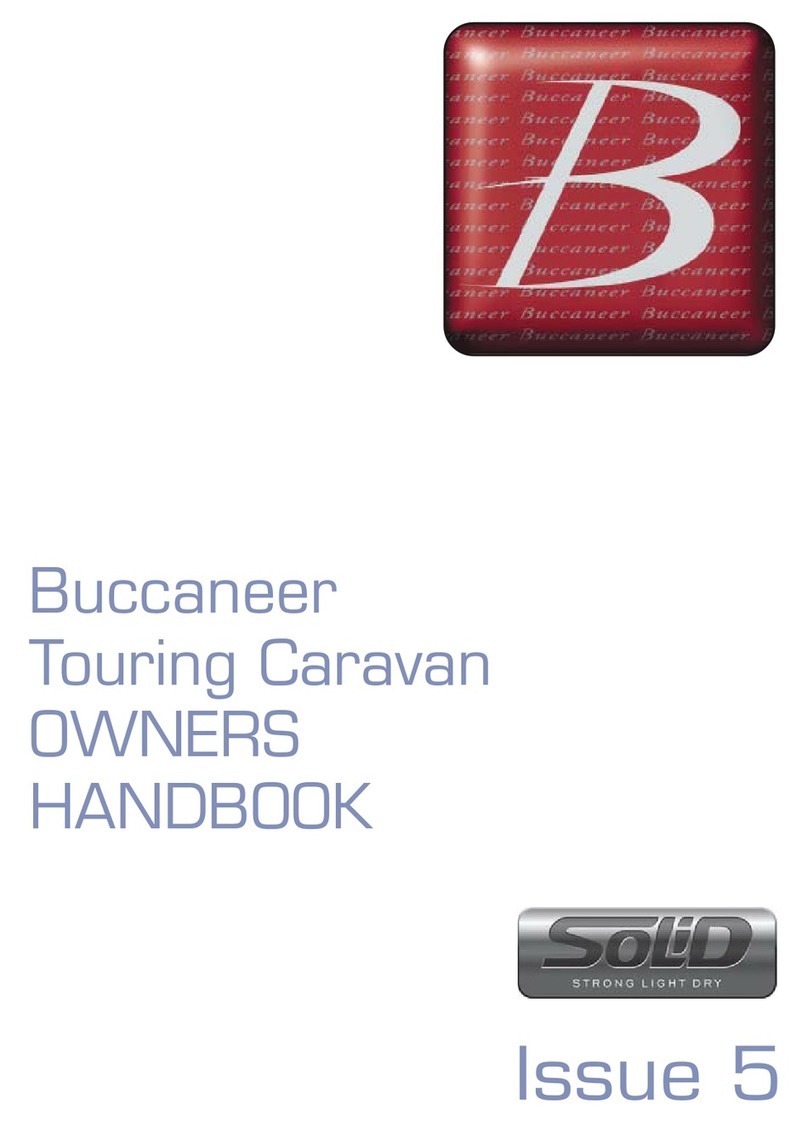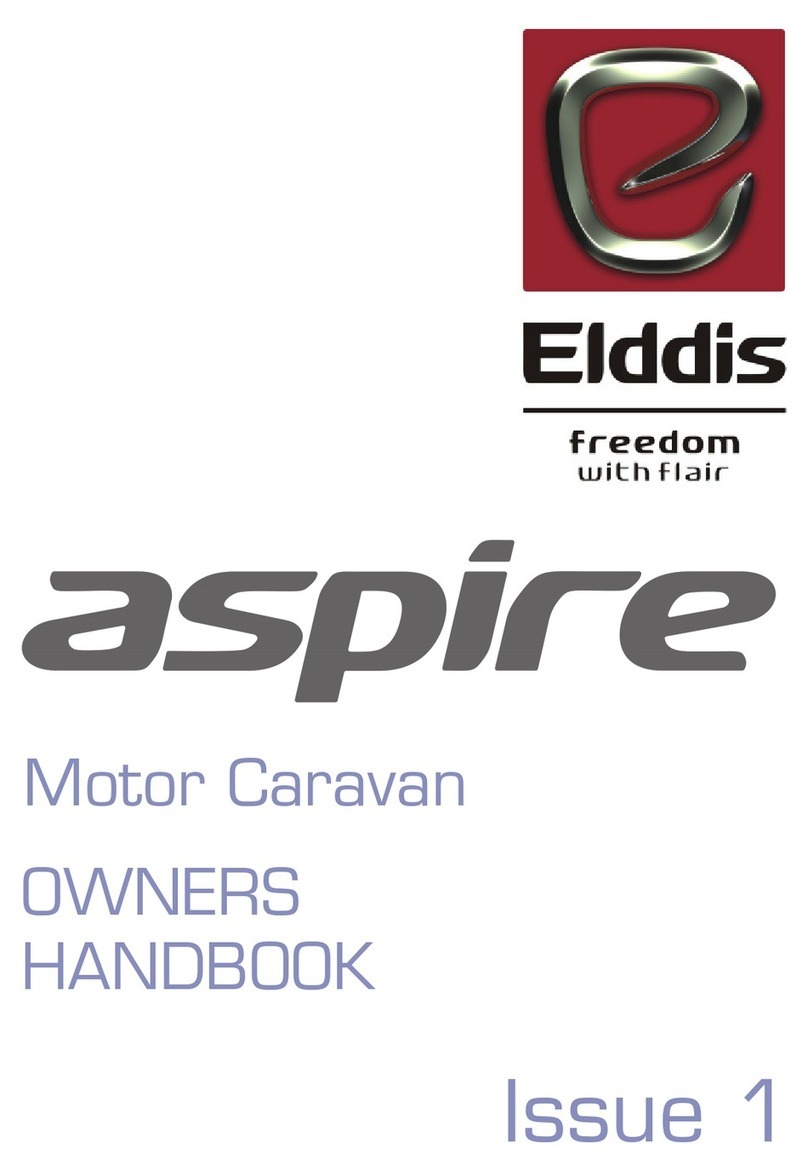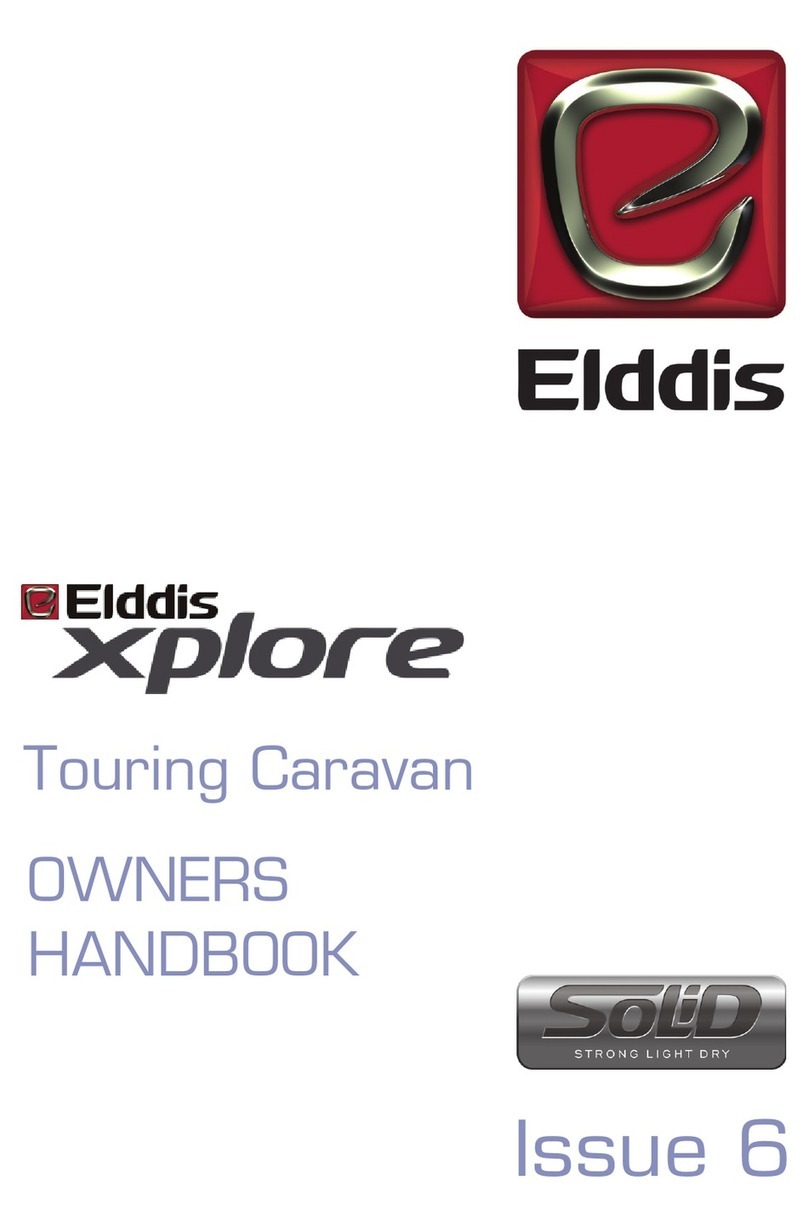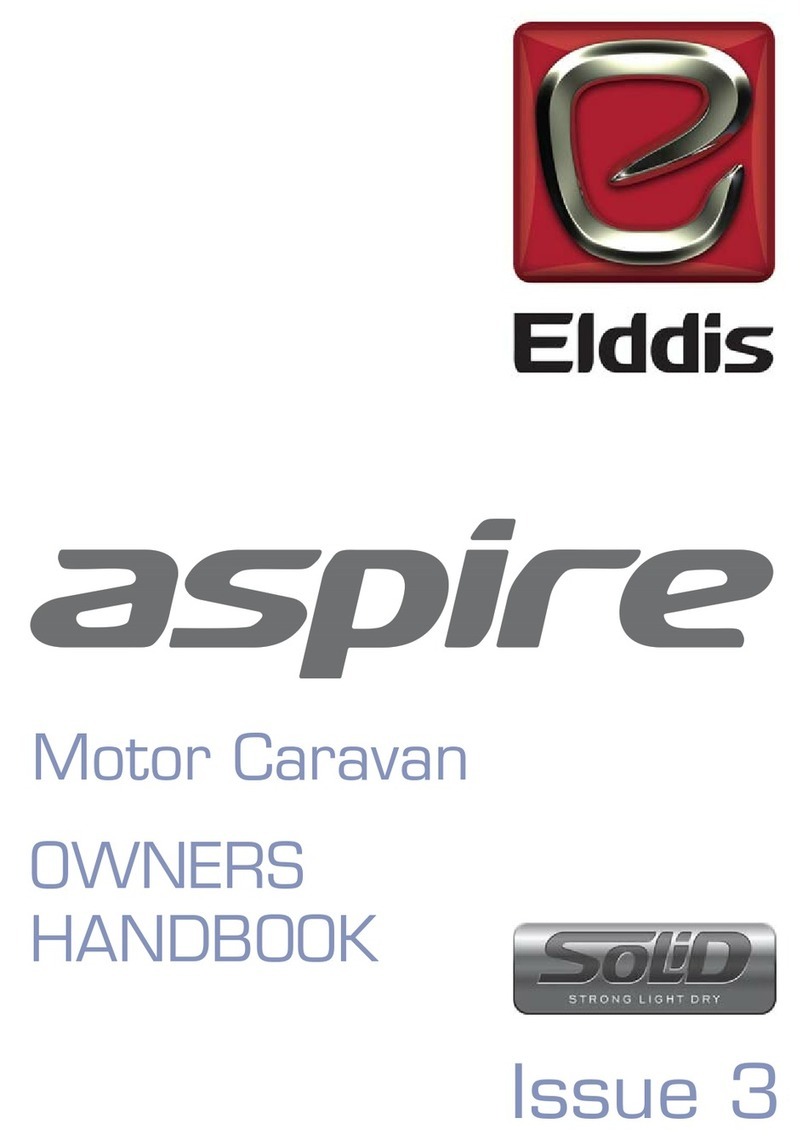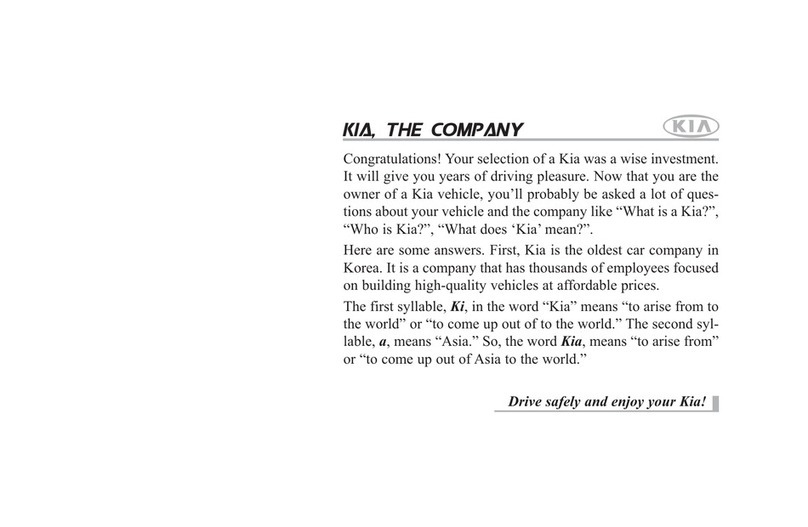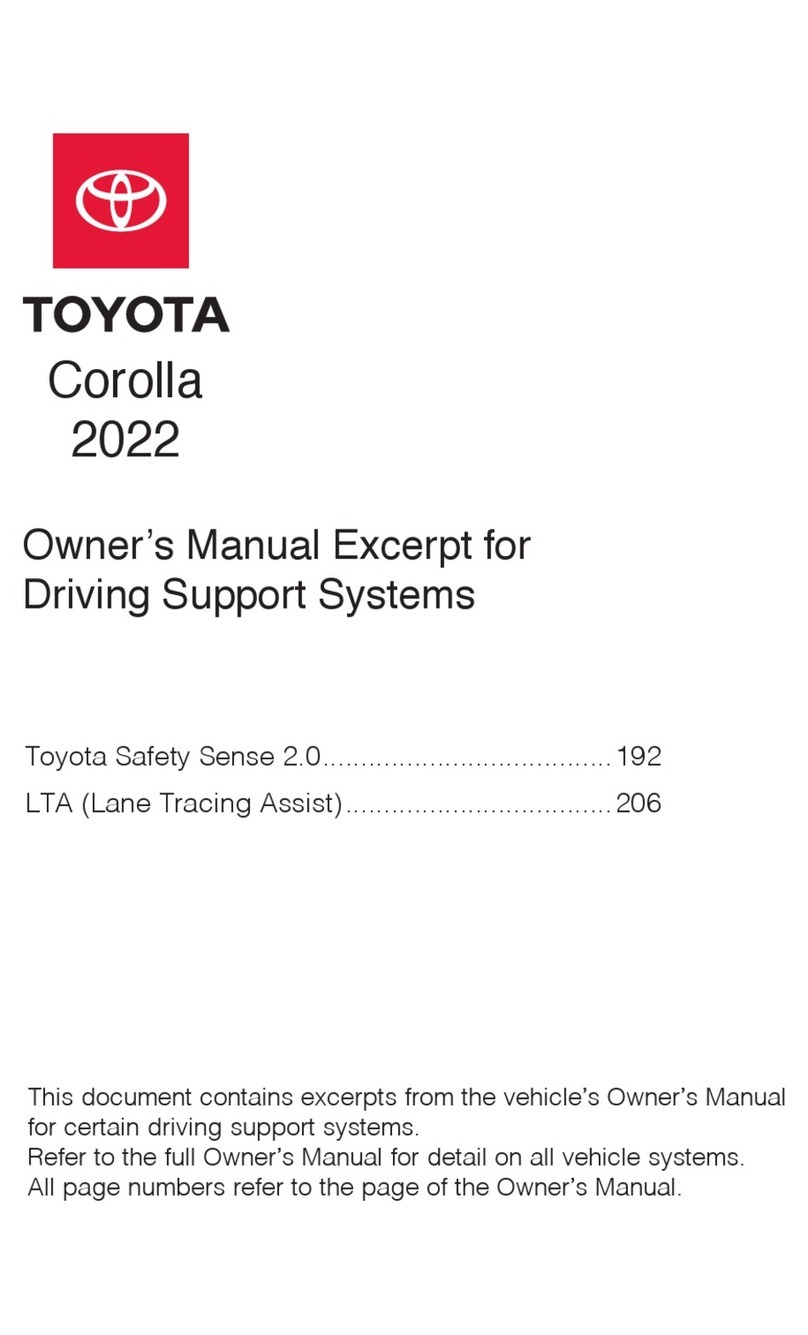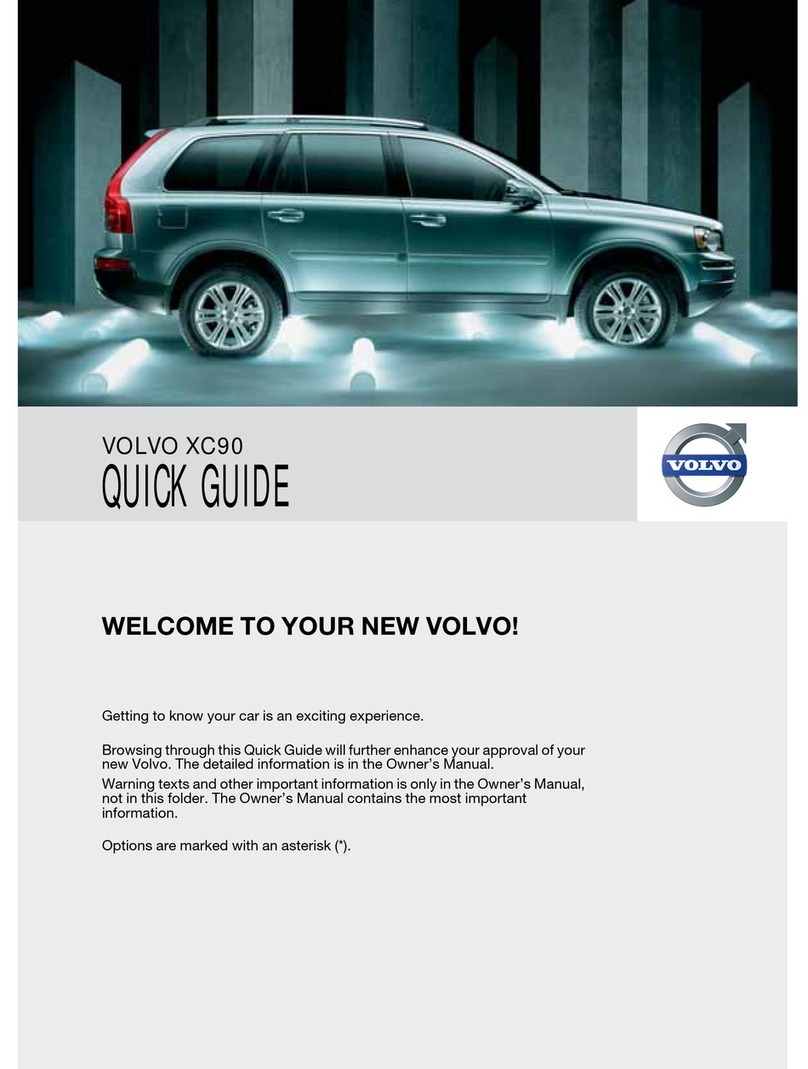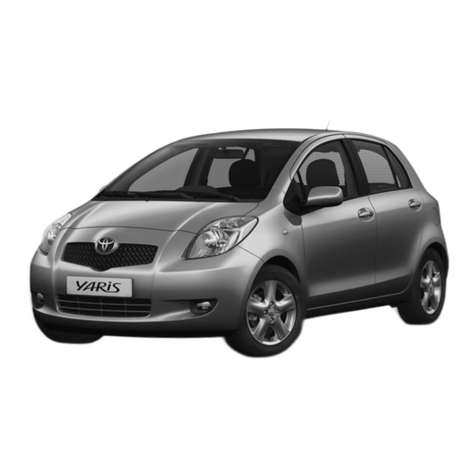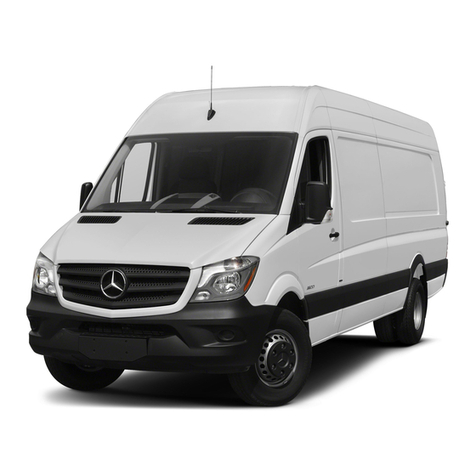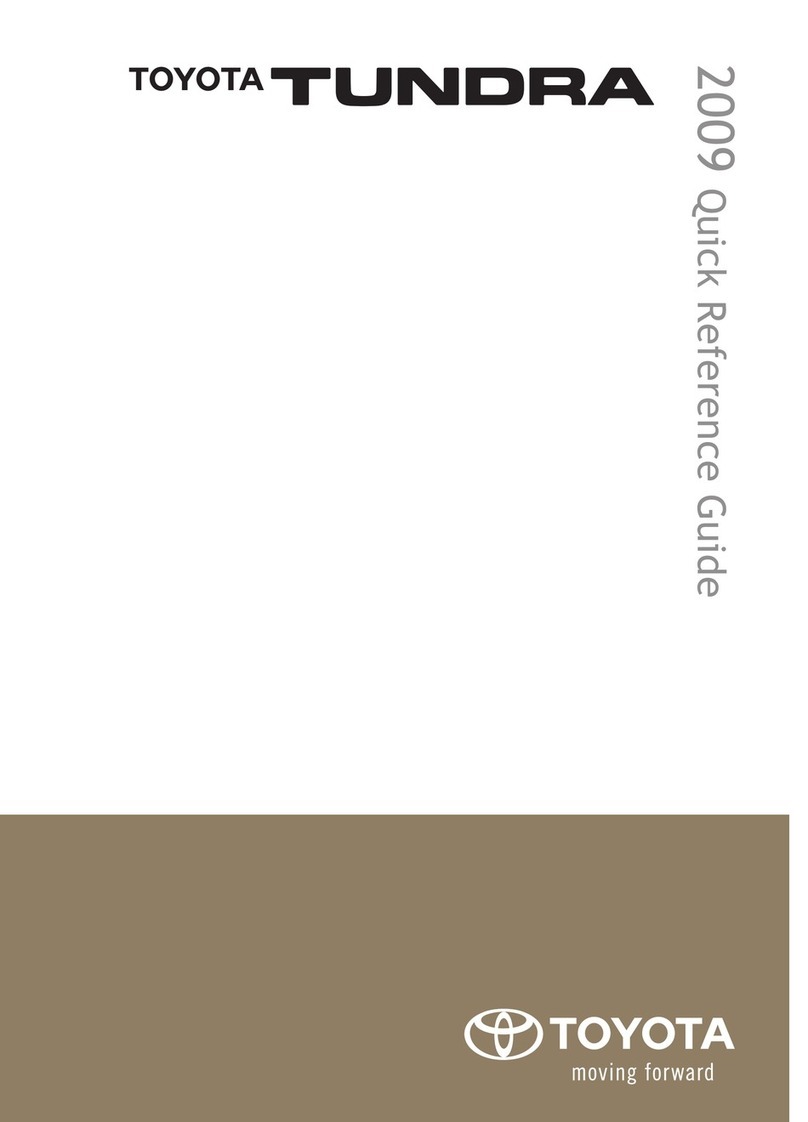elddis Autoquest 2013 User guide

AUTOQUEST
Issue 4
OWNERS
HANDBOOK
Motor Caravan
All the illustrations and descriptive matter in this guide are intended to give a general idea of the
caravan. Changing market and supply situations may prevent the manufacturer from maintaining
the exact specifications and details in this handbook and we therefore reserve the right to alter
specifications and materials as conditions demand.
Retailers are independent of the manufacturer and have absolutely no authority to bind the
manufacturer by any express or implied undertaking or representation.
The Explorer Group Limited Delves Lane, Consett, Co. Durham DH8 7PE
Telephone: 01207 699000 • Facsimile: 01207 699001 • www.explorer-group.co.uk
Model Year 2013

CONTENTS-1
CONTENTS
WELCOME & INTRODUCTION ......... 1-1
End Of LifeVehicle Directive ............................. 1-1
Explorer Group Technical Approvals ................ 1-1
GENERAL SAFETY ................................ 2-1
Please read before using your new
motorhome. ................................................... 2-1
Proper And Safe Use Of Storage Areas
In Motorhomes .............................................. 2-1
Ventilation .............................................................. 2-2
High-Level Ventilation .......................................... 2-2
Low-Level Ventilation ........................................... 2-2
Ventilation in Separate Bedrooms ..................... 2-2
Gas Dispersal Holes ............................................ 2-2
Fire Safety ............................................................... 2-2
Fire Extinguishers .................................................. 2-2
In Case Of Fire ...................................................... 2-2
Fire Retardant Foams .......................................... 2-2
PREPARING FOR THE ROAD .............. 3-1
Motorhome Weights Explained ......................... 3-1
Mass in Running Order ....................................... 3-1
Maximum Technically Permissible
Laden Mass ..................................................... 3-1
User Payload .......................................................... 3-1
Loading .................................................................... 3-1
Roof Racks ............................................................. 3-1
Roof Loading ......................................................... 3-1
Before moving off .................................................. 3-2
For Safety ............................................................... 3-2
Pulling Off ............................................................... 3-2
MOTORWAY HANDLING .................... 4-1
Best Practice .......................................................... 4-1
Speed Limits ........................................................... 4-1
Bicycle Racks ......................................................... 4-1
ARRIVING ON SITE .............................. 5-1
Check Site Regulations ........................................ 5-1
Selecting A Pitch ................................................... 5-1
Lateral Levelling (Side To Side) .......................... 5-1
Leveller Jack ........................................................... 5-1
Ramp ........................................................................5-1
GETTING STARTED ............................. 6-1
Electricity ................................................................ 6-1
Power Supply Charger ........................................ 6-1
12v Systems: .......................................................... 6-1
Generator/Charger ...............................................6-1
Electricity Mains Supply ....................................... 6-1
Connecting To Mains Supply On
Arrival at Site ................................................. 6-1
Disconnecting Mains Supply
When Leaving Site ........................................ 6-2
Overseas Electrical Connection.........................6-2
Gas Supply .............................................................. 6-3
Connection ............................................................ 6-3
Gas Regulator ........................................................ 6-3
Road Safe Gas Regulator .................................... 6-4
High Pressure Gas Hoses ................................... 6-4
Water System ........................................................ 6-5
Filling your fresh water tank .............................. 6-5
Waste Water Tank ................................................. 6-5
Draining DownYour Water System ................. 6-5
How to fill your motorhome’s water tank ..... 6-5
GAS SAFETY ADVICE ........................... 7-1
Facts about LPG .................................................... 7-1
Awning Spaces, LPG and Appliance Exhaust ... 7-1
LPG Gas System ................................................... 7-1
ELECTRICAL SYSTEM .......................... 8-1
12v Power Supply .................................................. 8-1
Battery Installation ................................................ 8-1
Battery Maintenance ............................................ 8-1
Generators / Charger ......................................... 8-1
230v Power Supply ................................................ 8-1
Mains Unit .............................................................. 8-1
Resetting the RCD ................................................ 8-1
Automatic Charging System............................... 8-2
Maximum Bulb Ratings for Internal Lights ...... 8-2
HOW TO USE YOUR MOTORHOMES
EQUIPMENT .................................... 9-1
How To OperateYour Motorhome
Entrance Door ............................................... 9-1
High Pressure Gas Hoses ................................... 9-1
Electrical Control Panel ...................................... 9-2
Cooking equipment .............................................. 9-3
Gas Hob ................................................................. 9-3
Gas Grill ................................................................. 9-4
Gas Oven ............................................................... 9-4
Refrigerator ........................................................... 9-5
Electrical operation ............................................... 9-6
Gas operation (LPG) ........................................... 9-6
Temperature setting .............................................. 9-6
Additional features ................................................ 9-7
Door locking ......................................................... 9-7
Whale Water Heater ......................................... 9-12
Whale Space Heater SH2012 .......................... 9-13
Carbon Monoxide Detector............................ 9-15
Battery Charger .................................................. 9-15
Smoke Detector ................................................. 9-15
Rooflights ............................................................. 9-16
The Heki 2 (Option) .......................................... 9-16
To Open To The Tilted Position: ...................... 9-16
To Open In The Intermediate Position: ......... 9-16
MY2013 Euro5/Elddis Autoquest Motorhome

CONTENTS-2
CONTENTS
To Open In The Ventilation Position: .............. 9-16
Closing The Blinds: ............................................. 9-16
Opening The Blinds: ........................................... 9-16
Standard MPK Rooflight .................................... 9-16
Midi Heki Rooflight ............................................ 9-16
The Omnivent (12v) Rooflight (Option) ....... 9-17
Door Flyscreen ................................................... 9-17
Taps ........................................................................ 9-18
Kitchen Taps ......................................................... 9-18
Internal Doors .................................................... 9-19
Toilet / Washroom Doors ................................ 9-19
Other Internal Doors ........................................ 9-19
Magnetic Catches ............................................... 9-19
Locker Door Catches ....................................... 9-19
Avtex LCD Flat Screen TV ............................... 9-19
Avtex Aerial ......................................................... 9-19
Radio/CD with MP3 Connectivity .................. 9-19
Thetford C-260 Cassette Toilet Range .......... 9-20
Introduction ......................................................... 9-20
Preparing for use (standard) ............................ 9-20
Using the toilet (standard) ............................... 9-20
Emptying ............................................................... 9-22
Emptying with Optional Features ................... 9-22
Cleaning and Maintenance ................................ 9-23
Toilet Bowl ........................................................... 9-23
Waste Holding Tank ........................................... 9-23
Cleaning and Maintenance for
Optional Features ....................................... 9-23
Winter operation ............................................... 9-24
Storage .................................................................. 9-24
Toilet unit malfunctions ..................................... 9-24
How To Make Up Your Beds ............................ 9-26
SECURITY ............................................. 10-1
Motorhome Theft ............................................... 10-1
Additional Security ............................................. 10-1
CARE OFYOUR MOTORHOME ........ 11-1
Glass Fibre Reinforced Plastic (GRP) ............. 11-1
Acrylic Windows ................................................ 11-1
Window Blinds & Flyscreens ........................... 11-1
ABS - Wheel Spats & Panels ............................. 11-1
Interior Walls ....................................................... 11-1
Furniture ............................................................... 11-1
Carpets, Upholstery And Curtains ................. 11-1
Washroom And Handbasin Fittings ................ 11-1
Shower Trays ........................................................ 11-2
Water Systems .................................................... 11-2
Water Containers .............................................. 11-2
Internal Water Systems ..................................... 11-2
Thetford Toilet ..................................................... 11-3
Changing A Wheel .............................................. 11-3
Pre-season Water System Preparation .......... 11-4
Getting Ready for the Winter ......................... 11-5
STORAGE .............................................. 12-1
Long Term & Winter Storage ........................... 12-1
Motorhome Covers ........................................... 12-1
Power Drain ........................................................ 12-1
CARAVAN/MOTORHOME WARRANTY
COVER (1ST OWNER ONLY) ..... 13-1
CODE OF PRACTICE .......................... 14-1
Mains Electrics ..................................................... 14-1
Spare Parts and non warranty work .............. 14-1
Remedial Work ................................................... 14-1
Body Shell ............................................................. 15-1
Windows .............................................................. 15-1
EQUIPMENT LIST ............................... 16-1
Autoquest ............................................................. 16-1
ELECTRICAL DRAWINGS ................. 17-1
Autoquest ............................................................. 17-1
GENERAL QUESTIONS ..................... 18-1
GLOSSARY ........................................... 19-1
ANNUAL HABITATION SERVICE
RECORDS ....................................... 20-1
NOTIFICATION OF CHANGE OF
OWNERSHIP ................................. 21-1
NOTIFICATION OF CHANGE TO
NAME AND ADDRESS .................. 22-1
INDEX ................................................... 23-1

1-1
INTRODUCTION
WELCOME & INTRODUCTION
Thank you for choosing a motorhome
manufactured by The Explorer Group.
Before you drive off, please familiarise yourself
with the motorhome and read this owners’
handbook.This will help you to obtain the
maximum pleasure from your vehicle and avoid
endangering yourself and others.
Additional information and detailed appliance
instruction manuals are also contained in your
Owner’s Information Pack.
Your new Elddis motorhome has been designed
as a recreational vehicle and is intended for
recreational use only. It is not intended for
business use or for permanent habitation.The
Explorer Group accepts no liability if the
motorhome is used for any purpose other than
recreational/holiday use.
Please Note: All Explorer Group motorhomes
are classified as Grade 2 and therefore meet with
the thermal insulation and heat levels for specific
climatic conditions as specified within the British
and European Standard BS EN 1646 part 1.
By following the instructions provided in this
handbook and maintaining your motorhome in a
first class roadworthy condition, you are sure to
have many years of carefree use.To ensure the
very best quality and reliability all motorhome
designs and new developments are rigorously
tested.Therefore the Explorer Group Ltd will
accept no liability or uphold the warranty if the
motorhome is altered or modified in such a way
that would adversely affect the reliability.
IMPORTANT
The Explorer Group serial number of your
motorhome should be quoted in all
correspondence, it can be found stamped on a
plate fixed next to the motorhome door. It is also
found within the engine compartment marked in
blue ink.Your Explorer Group motorhome serial
number can also be found on the NCC certificate
that can be found within your Owner’s
Information Pack.
There is also a Peugeot serial number on the
chassis cab or pillar, which should be quoted in
any communications with Peugeot.
Changing market and supply situations may
prevent us from maintaining the exact
specification details in this guide and we therefore
reserve the right to alter specifications as
materials and conditions demand and supply an
alternative.
Enjoy your new motorhome.
End Of LifeVehicle Directive
Your new motorhome fully complies with the
European Directive on the End of Life Vehicles. In
order to obtain information on how to dispose of
your motorhome at the end of its life please visit
the Peugeot website.The Peugeot website
contains full details on all Peugeot products
together with details of their environmental and
recycling policies.The site address is
www.peugeot.co.uk.
Explorer Group Technical Approvals
All Explorer Group Motorhomes have been
European Commission Whole Vehicle Type
approved via the Vehicle Certification Agency
(VCA). In order to ensure your new motorhome
is safe to use the Explorer Group are members
of and have been inspected by the following
bodies.
National Caravan Council (NCC) who operate a
certification scheme to ensure compliance with
the European safety standards for motorhomes.
National Inspection Council for Electrical
Installation and Contracting (NICEIC) who carry
out an annual inspection of the Explorer Group
electrical installations within motorhomes.
Gas Safe Register™ approved installers carry out
an annual inspection to ensure that the gas
installation installed by the Explorer Group fully
comply with all relevant regulations and
standards.
The Explorer Group is an ISO 9001:2008
approved manufacturer certified by SGS Limited.
Please note: Explorer Group Motorcaravan
model year.
The Explorer Group model year starts on the 1st
September and runs to the 31st of August.

1-2
INTRODUCTION

2-1
GENERAL SAFETY
GENERAL SAFETY
Please read before using your new
motorhome.
In order for you to get the most out of your new
Explorer Group motorhome it is necessary for
you to be aware of the following:
(i) Do not obstruct ventilators (See Safety
Section - Ventilation)
(ii) Inspect the flexible gas hose regularly for
deterioration and renew as necessary, with
approved type, as and in any case no later
than the expiry date stated on the hose.
(iii) It is recommended that you provide a dry
powder fire extinguisher complying with
ISO 7165 of at least 1 KG capacity by the
exit door and a fire blanket next to the
cooker. Ensure you read the ‘advice to
occupier label’ fitted to your motorhome.
(iv) Never use portable cooking or heating
equipment inside your motorhome. Do
not use your fitted cooking equipment as
heating at any time.
(v) Never allow modification to your gas or
electrical system unless qualified persons
carry them out.A Gas Safe Register™
approved gas fitter should carry out all
modification to the gas system.Any
modifications carried out on the electrical
system should be carried out by an
electrician on the roll of the NICEIC or be
a member of the ECA.
(vi) Never exceed your motorhome’s
Maximum Technical Permissible Laden
Mass.
(vii) Never exceed the front or rear axle
maximum load as specified by the Peugeot
weight plate under the bonnet.
(viii) Please ensure extra care when young
children use high level bunks and always
use the safety board provided.
(ix) Do not leave children under 14 years of
age unattended in your motorhome.
(x) Your motorhome heating may be used
while you are travelling.
(xi) Please ensure all gas appliances are turned
off while you are travelling.
(xii) If you suspect there is a gas leak please
open all the windows then vacate the
motorhome.Then contact your nearest
Elddis Retailer to arrange for them to
check the gas system.
(xiii) Only those seats designated for travelling
should be occupied when the motorhome
is in motion.
(xiv) Please note that motorhomes are covered
by the new seat belt regulations, which
came into force in October 2006.These
require children that are under 12 years
old and also under 135cm in height to be
seated in either child seats or on bolster
cushions.
(xv) Before travelling in your motorhome:
(a) Ensure all the tables have been stored
in their designated table storage position.
(b) Ensure that the water heater cowl has
been secured onto the external vent.
Proper And Safe Use Of Storage Areas In
Motorhomes
The storage areas provided in your motorhome
are designed solely for the purpose of carrying
personal possessions; these areas must not be
used:
•As a habitation area (e.g. living, sleeping or
cooking).
•To carry passengers, animals or livestock.
•For the installation (or use) of any LPG gas
operated appliances, (unless supplied fitted by
the manufacturer).
•For carrying LPG gas bottle cylinders, (unless
designated by the manufacturer).
•To carry any flammable liquids, (unless
properly stored, sealed and secured).
•For the operation of an electrical generator.
•In such a way that the loading exceeds the
payload limit, as defined by the manufacturer.
•Such that the weight distribution of the
vehicle means non-compliance with the
vehicle axle loads.
Care must be taken to ensure that exterior
doors are closed, locked and that all possessions
are properly stored and secured before setting
off on any journey.

2-2
GENERAL SAFETY
VENTILATION
All motorhomes manufactured by The Explorer
Group are ventilated at both high and low level in
accordance with BS EN 721 SafetyVentilation.The
fixed ventilation points fitted in your motorhome
must not be blocked under any circumstances as
your safety may depend upon them. It is advisable
that the fixed ventilation points are checked and
cleaned (where necessary) on a regular basis.
High-Level Ventilation
This is always provided by fixed ventilation within
the fitted roof skylight.All roof skylights fitted by
Explorer Group provide fixed free area
ventilation.These roof skylights should be cleaned
annually by use of a small brush to remove any
dust that may have accumulated around the mesh
fitted. On some roof skylights the mesh can be
easily removed to aid cleaning. On fan-assisted
roof skylights it is essential that the fan is
switched off prior to cleaning
Low-Level Ventilation
All Elddis Autoquest Motorhomes have fixed low
level ventilation provided within one or more bed
boxes.These ventilators are covered with plastic
covers designed to prevent them from being
obstructed by items placed within the bed box.
These covers can be removed by undoing the
two screws in order to facilitate cleaning the
ventilators, however these covers must be
replaced once cleaning is completed.
It is essential for your safety that these
ventilators are not blocked at any time.
Ventilation in Separate Bedrooms
In motorhomes with separated sleeping areas,
separate ventilation is required and is provided
via a roof skylight at high level and a ventilator at
low level within a bed box.
Gas Dispersal Holes
All appliances and gas unions have a gas dispersal
hole nearby. It is essential that these are not
blocked or made ineffective.
FIRE SAFETY
Fire Extinguishers
It is recommended that a 1 kg (21b) minimum
capacity dry powder fire extinguisher be carried
inside your motorhome at all times. Fat pan fire
must not have an extinguisher aimed at it, but
must be smothered with a fire blanket.
In Case Of Fire
(i) Get everyone out of the motorhome as
quickly as possible using whichever exit is
quickest including windows. Do not stop to
collect any personal items.
(ii) Raise the alarm. Call the fire brigade.
(iii) Turn off gas container valve if safe to do so.
Fire Retardant Foams
All motorhomes are equipped with either
Combustion Modified High Resilient (CMHR)
foam cushions or sprung mattresses and fire
retardent fabric.These foams are very much safer
from a fire point of view than those previously
used. In addition all upholstery is made of fire
retardant fabric.

3-1
PREPARING FOR THE ROAD
PREPARING FOR THE ROAD
Before venturing out on to the road with your
motorhome, it is important that you prepare
correctly.
MOTORHOME WEIGHTS EXPLAINED
Mass in Running Order
The weight of your motorhome as it leaves the
factory, as new with standard fixtures and fittings,
plus an allowance for the driver of 75kgs and the
mass of the fuel when the tank is full, 90% of the
water carried in the water tank and an allowance
for the gas bottles.
MaximumTechnically Permissible Laden
Mass
The maximum mass the vehicle can be when fully
laden for use on the road.
User Payload
The load margin (payload), this represents the
difference between the Mass in Running Order
and the Maximum Technically Permissible Laden
Mass. It shows the maximum weight that can be
loaded into your motorhome, covering items
such as food, crockery, cutlery, clothing, bedding,
etc.
Loading
It should be noted that even weight distribution
is a major factor in making your motorhome an
easy and pleasant vehicle to drive. Care should
therefore be taken in balancing the load, ensuring
that heavy items are well spaced and are in as low
a position as possible, for example, low cupboards
and bed boxes.
IMPORTANT: Do not exceed
recommended maximum loading for your
motorhome.
Roof Racks
Some models of motorhomes have, available as an
option, a roof rack and ladder. Care is needed
when using this facility.We recommend you
exercise extreme caution when loading and
unloading.
CAUTION
Do not allow children to climb onto the
roof. Do not exceed the stated maximum
load. Items fitted other than standard
equipment will deplete the payload stated
in this handbook.
Roof Loading
All motorhomes have a specially designed roof
rack system fitted or available as an optional
extra.The roof of each motorhome is
strengthened to accommodate the roof rack,
however, the strengthened area only relates to
that contained within the roof rack area, and to
step beyond this area may cause damage to the
roof.
Please Note: The roof rack is capable of
withstanding a maximum weight of 12 stone/
76kgs. Static roof loading or top box loading
should be limited to a maximum of 76kgs
including contents, or the limit set by the top box
manufacturer, whichever is the lower figure.
WARNING: Under NO circumstances walk
on the over cab roof section
Before venturing out on to the road with your
motorhome, it is important that you prepare
correctly.
Roof loads should be evenly distributed and
securely fastened, but care must be taken not to
overtighten straps or ropes to the point where
roof rails or brackets may become distorted,
particularly as during braking and cornering,
forces exerted by straps or ropes are greatly
increased.
It is also worth noting that when carrying heavy
or large objects on the roof, the vehicles handling
may change due to the resultant displacement of
the centre of gravity and the increased area
exposed to the wind.
SENSIBLE LOADING
HOW TO APPORTION WEIGHT

3-2
PREPARING FOR THE ROAD
BEFORE MOVING OFF
Whenever making a journey with your
motorhome, either setting off on holiday or
returning home, it is good practice to run
through this simple checklist.
(i) Close and secure all cupboards and
drawers and check for any loose articles.
(ii) Do not store tins, bottles, etc. in overhead
lockers.
(iii) Close and secure all windows and roof
lights.
(iv) Leave all curtains and blinds open to aid
visibility.
(v) Check that gas cylinders are securely
fastened and that the valve on the gas
cylinder is turned off.Also ensure that the
gas locker door is securely fastened.
(vi) Turn off all gas appliances.
(vii) Switch off 240volt supply at source;
disconnect mains cable and store in an
appropriate place.
(viii) Check that the battery is secure and that
the battery box lid is fastened.
(ix) Ensure the fridge is on 12V operation and
door lock is set. (Note: the electrical
relays will allow the fridge to be run on
the vehicle battery when the engine is
running.)
(x) Remove any external fresh water
connections etc.
(xi) Make sure any heavy articles are stored in
accordance with the loading procedure.
Tables should also be made secure.
(xii) Lock the motorhome exterior door
(remember to take out your keys).
(xiii) Check your external rear view mirrors
and adjust if necessary.
(xiv) If a step is used, ensure it is put away
before moving off.
(xv) Your new Explorer Group motorhome
has been designed to carry passengers in
designated passenger seats only.The fitting
of a 3-point seat belt can identify these
seats.Any seat not fitted with a 3point
seat belt is not designated as a passenger
seat.
(xvi) You are strongly recommended not to
carry passengers unless they are seated in
a designated passenger seat.
(xvii) Check that the water heater cowl cap has
been secured on the external vent.
For Safety
(i) Ensure all the tables have been stored in
their designated table storage position.
(ii) Ensure that the water heater cowl cover
has been secured onto the external vent.
Pulling Off
•Engage the clutch smoothly.
•Avoid wear and tear on clutch and
transmission by taking extra care.
•Change gears smoothly.
•Try not to jerk the clutch.

4-1
MOTORWAY HANDLING
MOTORWAY HANDLING
Best Practice
To gain the most enjoyment and ensure a long life
for your motorhome, the following should be
observed:
• Do not bump kerbs with wheels.
•When passing other vehicles allow more
than the normal clearance.
• Allow longer to get up speed to pass. Do not
suddenly swing out.
•Carry out all manoeuvers as smoothly as
possible.
•Use the nearside wing mirror to check your
motorhome has cleared when overtaking.
•Slow down and take care when driving over
raised speed bumps,‘sleeping policemen’ or
when embarking/ disembarking ferries.
•In high or cross winds, travelling downhill or
in conditions of poor visibility reduce your
speed.
•High-sided vehicles can cause air buffeting so
extra care must be taken when passing or
being passed. Leave as much space as possible
when overtaking these types of vehicles
Speed Limits
Be sure to observe all statutory speed limits and
adapt your speed to take account of prevailing
weather and road conditions.
WARNING
Ensure the wheel is of the same
construction and size as the one that has
been removed.
Bicycle Racks
Fitting a bicycle rack to the rear panel of a
motorhome will affect how weight is distributed.
There are restraints to be aware of with such
fitments.
We would advise you to carry a maximum of
75kgs on the bicycle rack provided this does not
exceed the bicycle racks own weight limit.
The motorhome must also be balanced to take
into account the new weight distribution.Weight
must be distributed evenly.
Bicycle racks are not standard fit or supplied as
an optional extra byThe Explorer Group.
Explorer cannot be held responsible for problems
related to a bicycle rack fitted by a third party. A
copy of the rear panel drawing must be obtained
fromThe Explorer Group to ensure correct
fixing points are located.

4-2
MOTORWAY HANDLING

5-1
ARRIVING ON SITE
ARRIVING ON SITE
CHECK SITE REGULATIONS
On arrival at a campsite, you should always check
the site regulations.This will help avoid any
unnecessary conflict with site management and
other site users.
SELECTING A PITCH
Carefully select where you wish to place your
motorhome.The site should be as level as
possible, preferably not under or near trees, well
drained and away from possible boggy areas.
Consider how you will move the motorhome
when it is time to leave the site. On sloping
ground it is better to pitch facing downhill,
especially during wet weather.
LATERAL LEVELLING (SIDETO SIDE)
A quick glance at your pitch should tell you if you
are likely to need side to side leveling i.e. levelling
across the axle. On uneven ground lateral
levelling is accomplished by the use of a leveler
jack or ramp and a spirit level placed ‘across’ the
motorhome floor.
LEVELLER JACK
Place the leveller jack, folded flat, in front of the
wheel that is to be raised to level the axle. Drive
the motorhome onto the leveler jack and adjust
the height until the spirit level shows that the
motorhome is laterally level.
RAMP
Reverse onto your pitch about a foot further
back than you wish to end up.Then place the
levelling ramp in front of the wheel that needs to
be raised.
Place a spirit level parallel to the axle or just
inside the motorhome door. It helps to have two
people at this point. One should drive the
motorhome very slowly forward moving the
wheel up the ramp, and the other should indicate
when the spirit level bubble is in the middle.
Whichever method you use, once level, apply the
motorhome handbrake and chock the
motorhome wheel if necessary.

5-2
ARRIVING ON SITE

6-1
GETTING STARTED
GETTING STARTED
You have arrived at your destination and now
want to start to enjoy your new Explorer Group
motorhome.The following is a step by step guide
to connecting your services and getting
everything in your motorhome working.
ELECTRICITY
Power Supply Charger
Your motorhome is fitted with a power supply/
charger. This will charge the motorhome leisure
battery when fitted and also power the 12V
systems in your motorhome.
It is recommended that you always carry a leisure
battery.
The Charger is fully automatic and will not
overcharge the leisure battery.
12v Systems:
Your motorhome is fitted with an automatic
system for selection of power.
When connected to the 230V site supply the
automatic Power Supply/Charger will charge the
leisure battery and the 12V systems.
When the ignition is switched on the 12V system
in the motorhome is automatically switched off,
car power is supplied to the refrigerator and
battery charging is in operation.
GENERATOR/CHARGER
When connecting to a generator, always switch
off the RCD, start the generator and allow
running for a few minutes to stabilize. When this
has happened, switch the RCD to the ON
position.
ELECTRICITY MAINS SUPPLY
Your motorhome’s main electrical installation is
designed to run on 230V at 50 hertz AC supply.
CONNECTING TO MAINS SUPPLY ON
ARRIVAL AT SITE
Before connecting the motorhome installation to
the mains supply, check that:
(i) The mains supply is suitable for your
installation and appliances, i.e. whether it is
AC or DC and whether it is at the correct
voltage and frequency.
(ii) Your motorhome is properly earthed. Never
accept a supply from a socket outlet or plug
having only two pins, or from a lighting
outlet.
(iii) Any residual current device (earth leakage
circuit breaker) in the mains supply to the
motorhome has been tested within the last
month. In case of doubt, consult the site
owner or their agent.
(iv) Make sure that the switch at the site supply
point is off and that all electrical equipment
in the motorhome is switched off by
ensuring your motorhome mains isolating
switch on the MCB is in the ‘OFF’ position.
Once the above checks have been made:
(v) Remove any cover to the electricity inlet
provided on the motorhome, and insert the
female connector of the flexible orange
supply cable as shown.
(vi) Locate the site supply and remove any cover
from the socket outlet provided at the
supply point. Insert the male plug at the
other end of the flexible orange supply
cable. Switch on the main switch at the site
supply point (if appropriate).
(vii) Place any surplus cable under the
motorhome. Ensure that the surplus cable is
not coiled up as it could overheat.
(viii) The MCB main electricity supply switch
should be put in the ‘ON’ position.
(ix) Check the RCD is working by pressing the
test button. Once pressed all electrical lights
and appliances should cease to operate.
Reset, and then check the electrical system
is operational.

6-2
GETTING STARTED
(x) Finally in order to get your 12V system
operational, ensure the master 12V switch is
in the ‘ON’ position.
DISCONNECTING MAINS SUPPLY
WHEN LEAVING SITE
(i) Switch ‘OFF’ at the motorway mains
isolating switch.
(ii) Remove the male plug from the site supply.
(iii) Disconnect the female plug from the
motorhome and store the cable in an
appropriate locker.
OVERSEAS ELECTRICAL CONNECTION
Please Note: Connection to a mains voltage
supply OVERSEAS requires particular attention.
Care must be taken when connecting supplies
abroad since the supplies can be of REVERSE
POLARITY.
The significance of REVERSE POLARITY is that
when equipment is switched off, it may not be
electrically isolated.The only certain way of
making equipment safe is to unplug it.
A means of checking the polarity of the mains
supply when overseas is recommended.There are
available several proprietary makes of equipment
for the purpose.
If it can be achieved, it is preferable to connect
live to live, and neutral to neutral to maintain full
electrical protection.
CHECK all motorhome equipment is set-up to
accept the site supply before actually switching
on.
WIRING OF CONNECTING CABLE AND MOTORHOME MAINS INLET
WARNING: It is essential that connections are made exactly as shown. If terminal
markings are not in accordance with the above diagram they must be ignored.

6-3
GETTING STARTED
GAS SUPPLY
Your motorhome is designed to operate using
either propane or butane liquefied petroleum gas
at 30M/bar. Gas can be obtained from your
motorhome dealer. Your motorhome is designed
to accept a maximum 2 x 6kg Calor Lite propane
cylinders available from motorhome dealers and
Calor gas retailers. For further information please
visit www.calorlite.co.uk.
Connection
Make sure that heating and cooking appliances
and gas cylinders are switched off.
Each gas appliance is connected to its own gas
isolation tap under the cooker.These are
identified on the tap via a label. Below is a key to
identify each label.
To operate the tap the arrow on the tap shows
the direction of flow for the gas.The arrow
should be pointing towards the appliance for the
appliance to operate.There will be a small label
next to the bank of taps under the cooker, which
is also reproduced below:
Gas Regulator
Your 2013 Autoquest Motorhome has been
installed with a Whale gas regulator which is
designed to supply both Butane and Propane gas
at a pressure of 30mbar.
It is not designed to be used while the vehicle is
in motion.
Your Motorhome has been supplied with a
hose for connection to a propane gas
bottle.
The integrated overpressure safety device
complies with the requirements for a commercial
safety device against impermissible pressure
increases throughout Europe, a type tested
liquefied-gas heating system may be used while
driving (according to the EU directive 2001/56/
EC) if the system includes a regulator with an
appropriately configured gas installation.
Pressure regulating devices and hoses must be
replaced with new ones no more than 10 years
after their date of manufacture (every 8 years if
used commercially).This is the responsibility of
the operator.
Water Heater
Space Heater
Refrigerator
Cooking Appliance
Gas On/Off
Hob

6-4
GETTING STARTED
ROAD SAFE GAS REGULATOR
Operating instructions
The use of upright gas cylinders from which gas is
taken in the gas phase is mandatory for the
operation of gas regulators, gas equipment and
gas systems. Gas cylinders from which gas is
taken in the liquid phase (e.g. for fork lifts) must
not be used, since they would result in damage to
the gas system.
Taking into operation
Open gas remote switch if present.
1. Open the cylinder’s valve.
2. Firmly press the green reset button on the
high pressure hose.
3. Press gas flow monitor reset button (green
button) on gas pressure regulator slowly.
4. Release gas flow monitor reset button
(green button) on gas pressure regulator
slowly (3 seconds). If no pressure point is
felt when the button is pressed again, the
regulator is ready for operation (repeat
procedure if necessary). Start the gas-
burning devices if desired. If the gas
cylinders are closed, SecuMotion may switch
off after an extended period of no usage.
Changing a gas cylinder
Please use the included screwing tool to attach
and remove the high pressure hoses. It will help
you generate the necessary tightening torque and
will prevent damage to the screw fittings, which
may otherwise result from using an improper
tool.
When the cylinder is connected please ensure
that the high pressure hose is not placed under
any strain.
Residual gas: No smoking! No open flames!
-Close the empty gas cylinder’s valve.
-Remove the high pressure hose from the gas
cylinder and remove the clip-on adapter, if
present.
-Attach the high pressure hose to the full gas
cylinder and apply the clip-on adapter, if
present.
-Open the full cylinder’s valve.
-Press the hose-break safety device and the gas-
flow monitor (see “Taking into operation”).
Anytime after making changes, check the hose
connection to the cylinder valve for leaks (see
“Checking for leaks in the high pressure area”).
Exchanging hoses.
Please use the included screwing tool to attach
and remove the high pressure hoses. It will help
you generate the necessary tightening torque and
will prevent damage to the screw fittings, which
may otherwise result from using an improper
tool.
Residual gas: No smoking! No open flames!
-Close the gas cylinder’s valve.
-Remove the high pressure hose from the gas
cylinder (or from the slip-on adapter) and from
the regulator inlet.
When performing a hose change, please ensure
that the white gasket provided with the hose
(hose outlet - regulator inlet) is correctly
installed and not damaged.
We recommend that the gasket (part no. 50020-
76300) be replaced with every hose change.
-Screw country-specific high pressure hose to
SecuMotion inlet and cylinder (or to adapter).
Open the gas cylinder’s valve.
-Press the hose-break safety device and, if
necessary, the gas-flow monitor (see “Taking
into operation”).
Anytime after making changes, check the hose
connections to the cylinder valve and to the inlet
of the SecuMotion gas-pressure regulator for
leaks.
High Pressure Gas Hoses
You should only connect to this regulator using a
length of approved high-pressure hose not
exceeding 450mm from the gas cylinder to the
regulator.These approved high-pressure hoses
are available from your Elddis Retailer.These
hoses are connected using screw thread fittings,
which will make a seal if connected and tightened
using a spanner. Once the hose is securely
connected turn on the gas tap above the
regulator, then turn on the gas bottle to allow gas
to flow into the motorhome.
In order to make all your motorhome gas
appliances operational it is necessary to open
each appliance gas tap as detailed in previous
column. All your gas appliances should now be
operational. Instructions on how to use each
appliance are detailed later in your handbook.

6-5
GETTING STARTED
WARNING:Aerosols and highly flammable
liquids must not be stored in the
compartment behind, or adjacent to, any
gas appliance. Some industrial LPG
appliances operate at high pressure and
require a ‘high pressure’ regulator.This
often has an adjusting handle on it. NEVER
use such a regulator on a motorhome.
Ventilation holes must be clear at all times.
WATER SYSTEM
Filling your fresh water tank
Your new Elddis motorhome is fitted with a
Whale Autofill water system. In order to fill up
and automatically top up your water tank from
either a fixed water supply or a water container
please follow the instruction given on the next
page.
Please take care not to over fill your tank it is
advised that someone monitors the water level in
the tank while filling is in progress.
Waste Water Tank
Your new Explorer Group motorhome is also
fitted with a 701itre waste water tank.All waste
water excluding the toilet waste will run into the
waste water tank.The level of water in the tank
can be monitored using the control panel.
Opening the grey waste outlet provided on the
outside of the motorhome empties the tank.
Open the tap when the outlet is over a drain and
the water will run out of the tank.
Draining DownYour Water System
(i) It is essential that you drain down your
motorhome water system when it is not in
use.This is most important during winter
months to protect against frost damage
(ii) Disconnect the water pump and switch off
power supply.
(iii) Remove the water heater fuse from the
switch spur and store in a safe place.
(iv) Open the safety drain valve on the water
heater located next to the water heater.
(v) Open all taps and remove all plugs from
sinks and showers. Lever operated taps
should have the lever put into the up and
central position.
(vi) Open both the blue and grey drain outlets
on the outside of your motorhome.
(vii) Adjust the level of the motorhome to
ensure that the drain outlet is at the lowest
point of the motorhome.This will aid the
flow of water to ensure all water is drained
off.
After 30 minutes level the motorhome and
prepare it for storage if necessary.
How to fill your motorhome’s water tank
Your new Elddis Autoquest is fitted with a simple
water inlet to allow you to fill your water tank
directly from a tap using a standard hose.

6-6
GETTING STARTED

7-1
GAS SAFETY ADVICE
GAS SAFETY ADVICE
In the event of a suspected gas leak the gas must
be turned off using the isolation valve on the gas
bottle.A competent gas fitter should then check
the system before it is used/reused.
Regularly check flexible gas hose, joints and
connections for tightness. Finally, make sure that
each gas appliance is working efficiently to the
recommendations of the appliance
manufacturers.
See Index -Ventilation
FACTS ABOUT LPG
•LPG is not poisonous.
•Bi-products are harmless.
•LPG is dangerous if all air and oxygen is
excluded.
•LPG has been given a smell by the
manufacturers in order to identify leaks.
•The gas is heavier than air and therefore
sinks to the lowest point.
AWNING SPACES, LPG AND
APPLIANCE EXHAUST
There is no danger of pollution of an enclosed
awning space from the LPG exhaust from a
refrigerator venting into it. Space heaters may
produce sufficient exhaust to pollute the awning
space, if it is totally enclosed, from a general
comfort, smell and hygiene point of view. In
extreme cases there could be a build up of
carbon dioxide to a dangerous level. Motorhome
owners are advised to allow some fresh air
circulation in the awning space when such
appliances are in use.
Please Note: Ventilation holes must be clear at
all times.
LPG GAS SYSTEM
The Explorer Group does not recommend the
use of any external cylinders.All cylinders in use
should be within the gas locker provided. If you
wish to utilise a larger cylinder and have this
outside the gas locker then the connecting hose
must not exceed 750mm.
It is recommended that no flammable material is
stored or placed within 300mm of any open
flame. You are advised not to use any additional
gas appliances outside your motorhome unless it
is a Gas Barbecue connected via the Barbecue
point supplied with your motorhome.
Please ensure that you have read the operating
instructions for each gas appliance contained in
your Owners Information Pack. Please ensure
that any gas hose left unconnected is protected
from dirt or other foreign bodies entering the
hose.
This manual suits for next models
10
Table of contents
Other elddis Automobile manuals
Popular Automobile manuals by other brands

Chevrolet
Chevrolet 2015 VOLT owner's manual
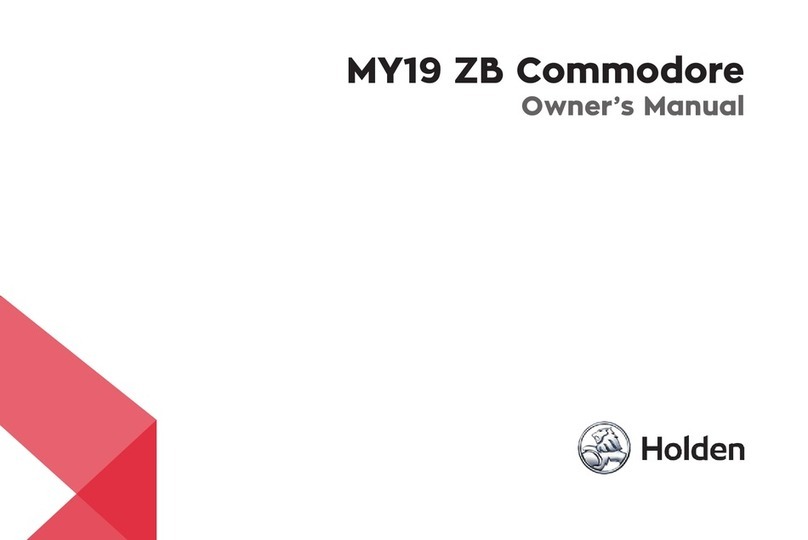
HOLDEN
HOLDEN ZB Commodore 2019 owner's manual

Mitsubishi MOTORS
Mitsubishi MOTORS Laser 1993 Service manual
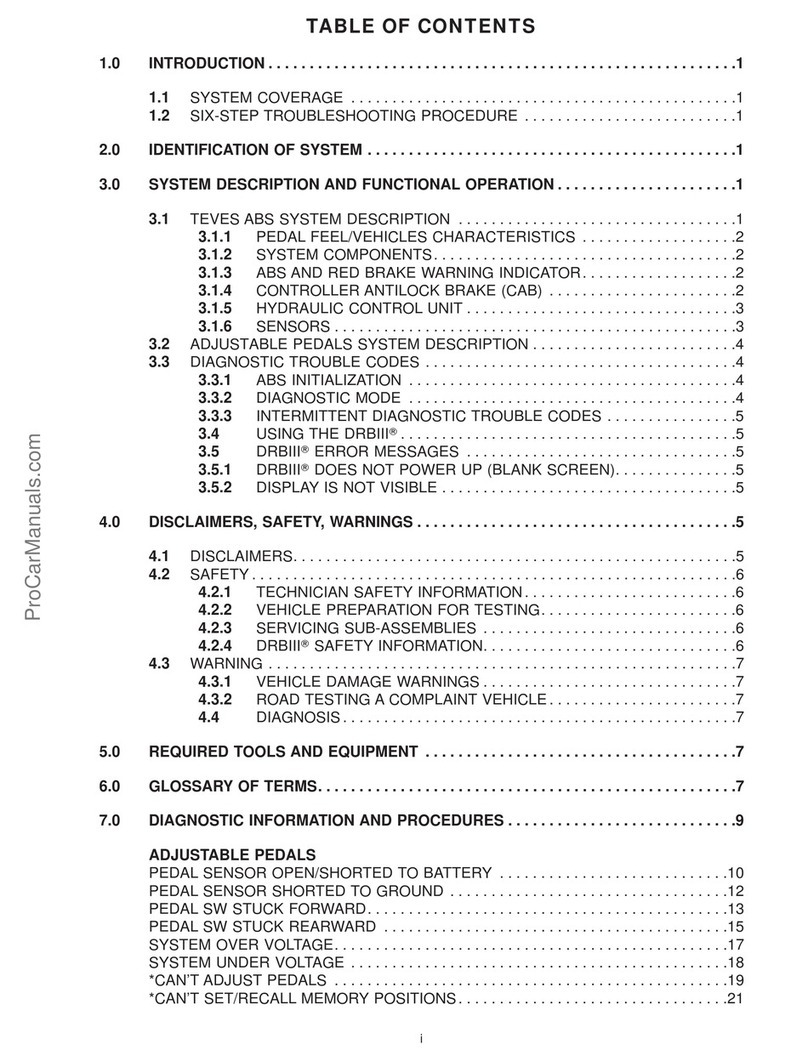
Jeep
Jeep WG Grand Cherokee 2002 Service manual
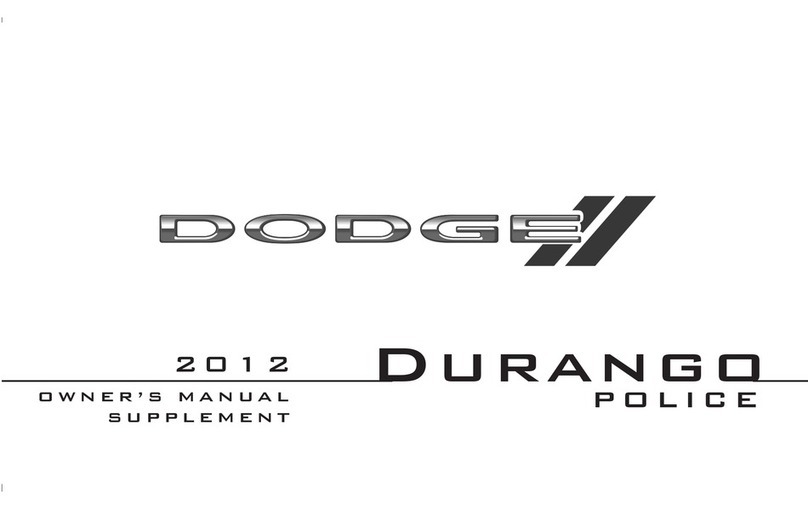
Dodge
Dodge Durango Police 2012 Owner's manual supplement

TATA Motors
TATA Motors Sumo Gold CR-4 Owner's manual & service book

